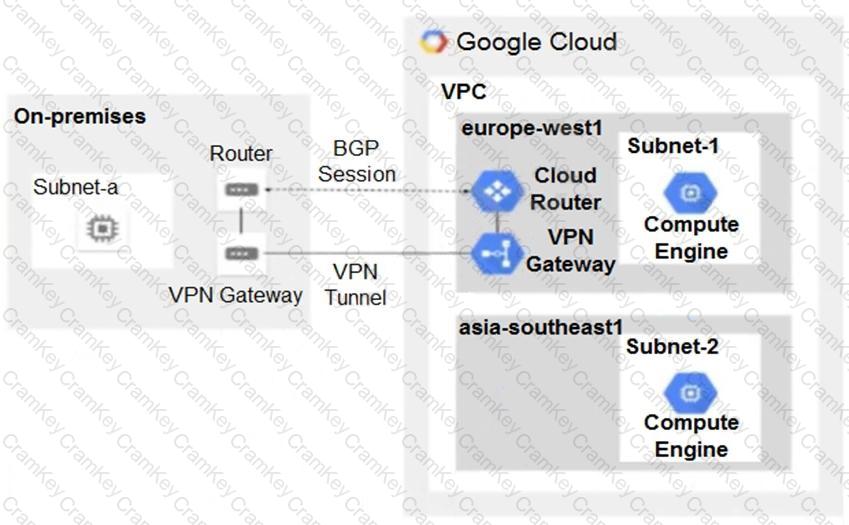| Exam Name: | Google Cloud Certified - Professional Cloud Network Engineer | ||
| Exam Code: | Professional-Cloud-Network-Engineer Dumps | ||
| Vendor: | Certification: | Google Cloud Platform | |
| Questions: | 233 Q&A's | Shared By: | ian |
You have the following routing design. You discover that Compute Engine instances in Subnet-2 in the asia-southeast1 region cannot communicate with compute resources on-premises. What should you do?

In order to provide subnet level isolation, you want to force instance-A in one subnet to route through a security appliance, called instance-B, in another subnet.
What should you do?
In your project my-project, you have two subnets in a Virtual Private Cloud (VPC): subnet-a with IP range 10.128.0.0/20 and subnet-b with IP range 172.16.0.0/24. You need to deploy database servers in subnet-a. You will also deploy the application servers and web servers in subnet-b. You want to configure firewall rules that only allow database traffic from the application servers to the database servers. What should you do?
Your organization has a single project that contains multiple Virtual Private Clouds (VPCs). You need to secure API access to your Cloud Storage buckets and BigQuery datasets by allowing API access only from resources in your corporate public networks. What should you do?